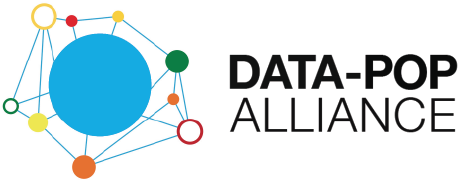C-19
Global South Observatory
*Some Country Briefs are available in both English and the national language.
About
The C-19 Global South Observatory aims to monitor the status, impacts and implications of the crisis in countries of the Global South through succinct and analytical Country Briefs, which provide a thorough overview of the situation in each country, informed by DPA and ADE‘s in-house and international experts, as well as by their network of local experts. Each Country Brief attempts to provide relevant and necessary contextual factors to characterize the current status of the pandemic, information that will be crucial to anticipate future needs. Particularly, we aim to understand the scope of the government’s current response and capacity, actions that have been put in place to mitigate the spread and effect of the pandemic, and to identify sources of vulnerability and risk.
The observatory looks to strengthen local awareness, information, capacities and connections to help countries and communities deal with COVID-19.
Briefs are updated once per week, and more will be added soon.
We want to hear from you
For more information, or if you want to share ideas, concerns or questions, please emails us at covid19@datapopalliance.org.
If you want to help us produce a Country brief for a Global South country currently missing in the C-19 Global South Observatory, please download this template and get in touch. Thank you!
Overview. Graph 1) Evolution of confirmed cases around the world, Graph 2) & 3) Confirmed cases & Fatalities in selected countries of the Global South
Country Briefs
Latin America & the Caribbean
Middle East & Africa
Asia
Indicators
| Country | First registered case | Total population (millions) | Population ages 65 and above (% of total) | GDP Per Capita/PPP (current international USD) | Informal employment (%) | Hospital beds (per 1,000 people) |
| Angola | 21/03 | 30.8 | 2% | 7,093 | 68% (2011) | NA |
| Benin | 16/03 | 11.5 | 3% | 3,238 | 95% (2011) | 0.5 |
| Brazil | 26/02 | 203.9 | 9% | 14,952 | 39% (2015) | 1.1 |
| Burkina Faso | 09/03 | 20 | 2% | 1,905 | NA | 0.4 |
| Cameroon | 06/03 | 25.2 | 3% | 3,691 | 82% (2014) | 1.3 |
| CAR | 14/03 | 4.6 | 3% | 956 | NA | 2.2 |
| Chile | 03/03 | 18 | 12% | 24,763 | 28% (2018) | 2.2 |
| Colombia | 06/03 | 49 | 8% | 14,834 | 57% (2018) | 5.8 |
| Côte d’Ivoire | 11/03 | 25 | 3% | 3,832 | 85% (2017 | 0.4 |
| DRC | 10/03 | 84 | 3% | 1,112 | 96% (2005) | 0.8 |
| Egypt | 14/02 | 98.4 | 5% | 11,643 | 53% (2017) | 4.7 |
| Equatorial Guinea | 13/03 | 1.3 | 2% | 20,856 | NA | 0.3 |
| Ethiopia | 14/03 | 109.2 | 4% | 2,154 | NA | 0.3 |
| Gabon | 12/03 | 2.1 | 4% | 15,103 | NA | 0.3 |
| Ghana | 12/03 | 30 | 3% | 5,321 | 83% (2015) | 2.1 |
| Guatemala | 13/03 | 17 | 5% | 8,655 | 73% (2017) | 3.7 |
| Haiti | 19/03 | 11.1 | 5% | 1,810 | 88% (2012) | 1.6 |
| Indonesia | 02/03 | 264 | 6% | 11,647 | 76% (2018) | 1.2 |
| Jamaica | 10/03 | 3 | 9% | 9,975 | NA | 0.7 |
| Kenya | 13/03 | 51.4 | 2% | 4,295 | NA | 0.8 |
| Lebanon | 21/02 | 6 | 7% | 16,417 | NA | 1.4 |
| Malawi | 02/04 | 18.1 | 3% | 1,071 | NA | 0.7 |
| Maldives | 07/04 | 0.5 | 4% | 18,959 | 47% (2016) | NA |
| Mali | 25/03 | 19 | 3% | 2,344 | 89% (2018) | 3.4 |
| Mauritania | 13/03 | 4.2 | 3% | 3,803 | NA | NA |
| Mexico | 27/02 | 129.2 | 7% | 20,397 | 61% (2004) | 0.7 |
| Morocco | 02/03 | 36 | 7% | 8,612 | NA | 1.4 |
| Mozambique | 22/03 | 29.5 | 3% | 1,321 | 87% (2015) | 0.3 |
| Myanmar | 23/03 | 53.7 | 6% | 4,996 | NA | 0.9 |
| Niger | 19/03 | 22.5 | 3% | 889 | 73% (2017) | 0.9 |
| Nigeria | 27/02 | 196 | 3% | 5,281 | NA | NA |
| Pakistan | 26/02 | 212.2 | 4% | 4,855 | 71% (2018) | 4.5 |
| Peru | 06/03 | 32.2 | 8% | 13,094 | 59% (2017) | 2.3 |
| Sierra Leone | 31/03 | 7.7 | 3% | 1,704 | NA | 2.2 |
| Tanzania | 16/03 | 56.3 | 3% | 3,240 | 72% (2014) | NA |
| The Gambia | 17/03 | 2.3 | 3% | 2,196 | 68% (2012) | 1.1 |
| Togo | 06/03 | 7.8 | 3% | 1,590 | 92% (2014) | 0.7 |
| Tunisia | 02/03 | 11.7 | 8% | 11,009 | NA | NA |
| Uganda | 22/03 | 42.7 | 2% | 1,837 | 83% (2012) | 0.7 |
| Uzbekistan | 15/03 | 33.3 | 4% | 6,899 | NA | 4.8 |
Sources: TheWorld Bank and WHO (Population over 65 years old, Informal employment, GDP-PPP, Hospital beds).
NA = Not available.


